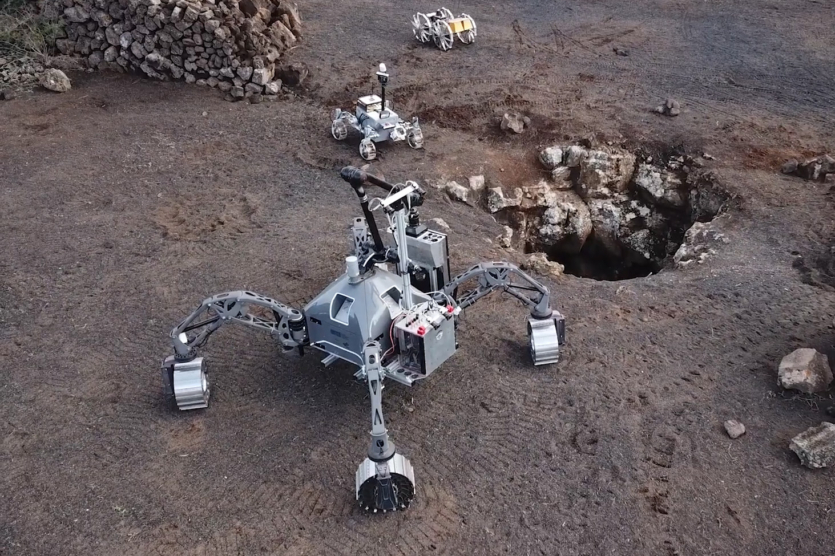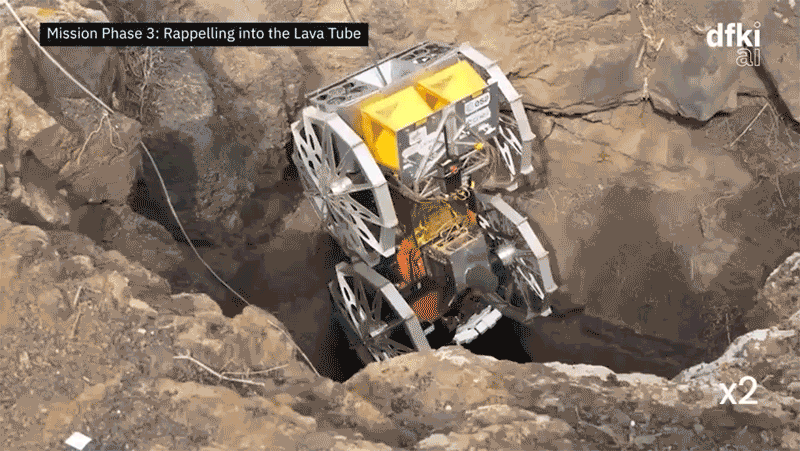
An international team of researchers presented specialized robots, are expected to be able to descend into the subsurface on Mars and the Moon.
The robotic systems were tested on the Spanish island of Lanzarote. As part of the tests, one robotic system assisted the other in descending a vertical shaft into an underground cave.
Volcanic eruptions often leave behind so-called “lava tunnels”. They are formed when lava flows flow under solidified lava, by the cooled surface layer, creating channels that remain empty after the eruption.

Satellite observations have revealed lava tunnels beneath the surface of Mars and the Moon. These underground tunnels can be an ideal place to build scientific bases for future missions. They will protect the first astronauts and colonists from cosmic rays, solar radiation, and micrometeorites.
“It can be a very suitable place to look for traces of life, as well as to locate the human environment”, — he says roboticist from the University of Malaga in Spain Carlos Pérez del Pulgar.
Carlos Pérez del Pulgar and his colleagues have developed a strategy to test the ability of robotic systems to explore a lava cave on the island of Lanzarote. The strategy of Spanish scientists consists of four stages. First, two rovers mapped the surface at the cave entrance. Afterwards, a small cubicle probe was separated from one of them and lowered by rover into the cave to create a detailed three-dimensional map of the entrance. The rovers used it to plan the optimal descent route.
As noted by Carlos Pérez del Pulgar, the next stage was the most difficult. The rovers had to work autonomously from each other. The smaller attached itself to a larger one and began to descend into the cave. The rover then separated and traveled 235 meters over uneven terrain, creating a three-dimensional map of the tunnel. The head of the study also noted, that if necessary, the study of large cave systems, the key problem will be maintaining reliable communication, as radio waves do not pass through rocks.
The results of the study were published in the journal Science Robotics
Source: Nature

Spelling error report
The following text will be sent to our editors: